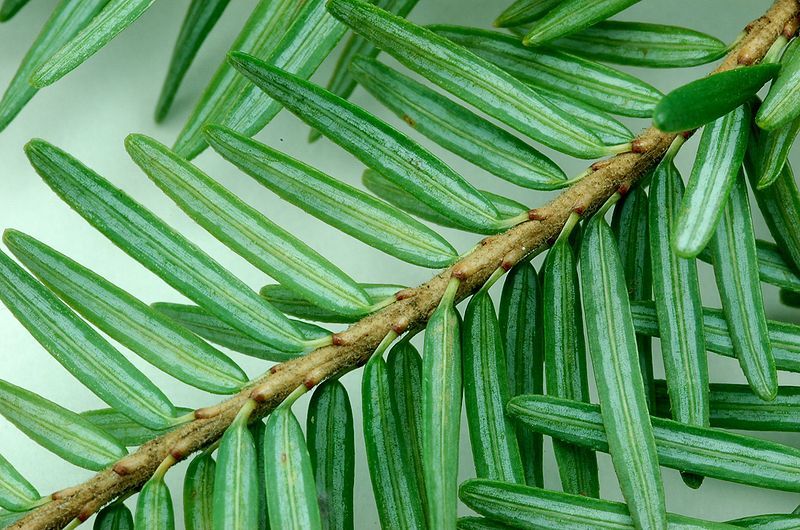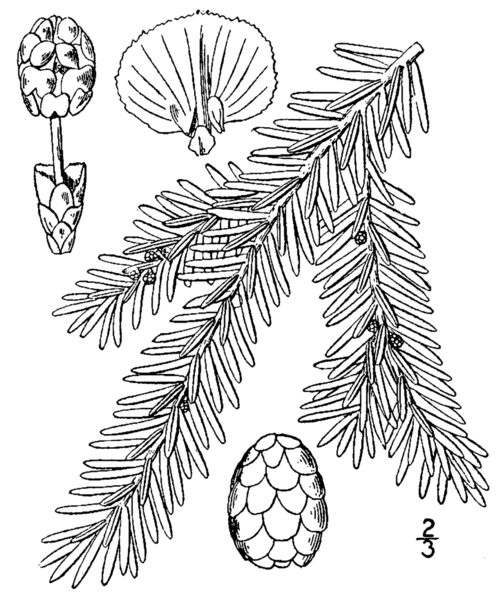Eastern Hemlock : What does it look like?
Tsuga canadensis is the Latin name of the eastern hemlock, and it is in the family Pinacae. The first thing to consider when attempting to ID an eastern hemlock is making sure it is a conifer. This means that it has needles instead of leaves and stays green all year round. The next thing to look at is the needles—it’s actually really easy to tell if the tree is a hemlock because there will be two white bands on the bottom of the needle.
The bands shown in the picture are called stomatal bands. These bands have cells on them that are able to open and close, allowing gas exchange to happen. To get more technical, the cells on the bands are called parenchyma and the cells that are able to open and close are called guard cells. Once you see these two bands, you can almost be positive that what you’re looking at is an eastern hemlock.
To be certain though, it’s always good to look at the tree shape, bark, cones, and buds. The general tree shape of an eastern hemlock is generally conical and the branches are rarely forked meaning the main branch goes straight up without splitting. As the tree gets old, it may look less cone-shaped as branches get shabbier and sparser. The bark is generally scaly and dark brown. The cones are small, typically 1.5-2.5 cm long and 1-1.5 cm in width. The buds on an eastern hemlock are ovoid (egg-shaped), a yellow-brown color, and pubescent (hairy).
Eastern hemlocks can get fairly large and live a very long time. One of the oldest specimens on record is about 554 years old! This tree was found near Tionesta, Pennsylvania. It was cut down in 1978 and the rings were cross-dated to 1425! They usually reach a height of about 100 ft, but there have been some that reach up to 173 feet. A big eastern hemlock tree could have a diameter of 5-6 ft at breast height. Hemlocks are special because many are very old and large, known as champion trees, and some are so well known they even have names! Cheoah is an eastern hemlock that lives in the Smokies and stands tall at 158.7 feet. Although most of the hemlocks you’ll see won’t be that tall, it’s fascinating to know that they are able to grow so big.


